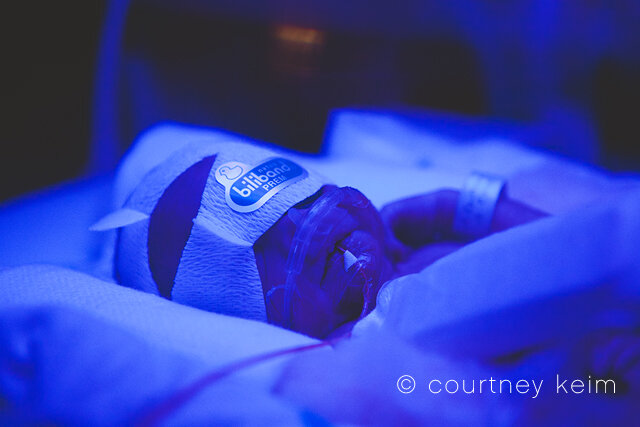Hyperbilirubinemia AKA “neonatal jaundice” is defined as the clinical manifestation in skin and sclera (eyes) of elevated serum concentrations of bilirubin. It is a very common condition and develops in 60-80% of all infants born in the U.S. each year. Usually it manifests during the first week of life. Some cases are mild and may not need any treatment.
Treatment is based on weight and serum bilirubin level and can include:
Phototherapy (single, double, triple, etc.)
IV fluids for hydration
Exchange transfusion (rarely) as indicated
What is jaundice?
A yellow coloration caused by increased amounts of bilirubin in the blood. Bilirubin is a break-down product of red blood cells; it is processed and excreted by the liver.
What is phototherapy?
AKA “bili lights”, this is a treatment in which the baby is placed under bright blue lights which helps bilirubin to get excreted into the intestines. The light breaks down the bilirubin in the blood so that it’s easier for your baby’s body to get rid of it. The nurse will cover the baby’s eyes with a mask/shield to protect them from the bright lights. The more skin (surface area) exposed to the lights, the more effective the treatment will be. That said, kangaroo care and breastfeeding may be discouraged temporarily in order to avoid removing the baby from the lights until the bili level reaches a normal value.
What is an exchange transfusion?
A treatment which removes the baby's blood in small quantities and replaces it with donor blood. It is indicated in severe cases of elevated bilirubin in order to prevent bilirubin encephalopathy (BE).
Bilirubin encephalopathy is a rare neurological condition that occurs in some newborns with severe jaundice. If the level of bilirubin is very high and not treated, the substance will move out of the blood and collect in the brain tissue if it is not bound to albumin (protein) in the blood. This can lead to serious problems such as brain damage and hearing loss. The term "kernicterus" refers to the yellow staining caused by bilirubin that can be seen in parts of the brain on autopsy.

